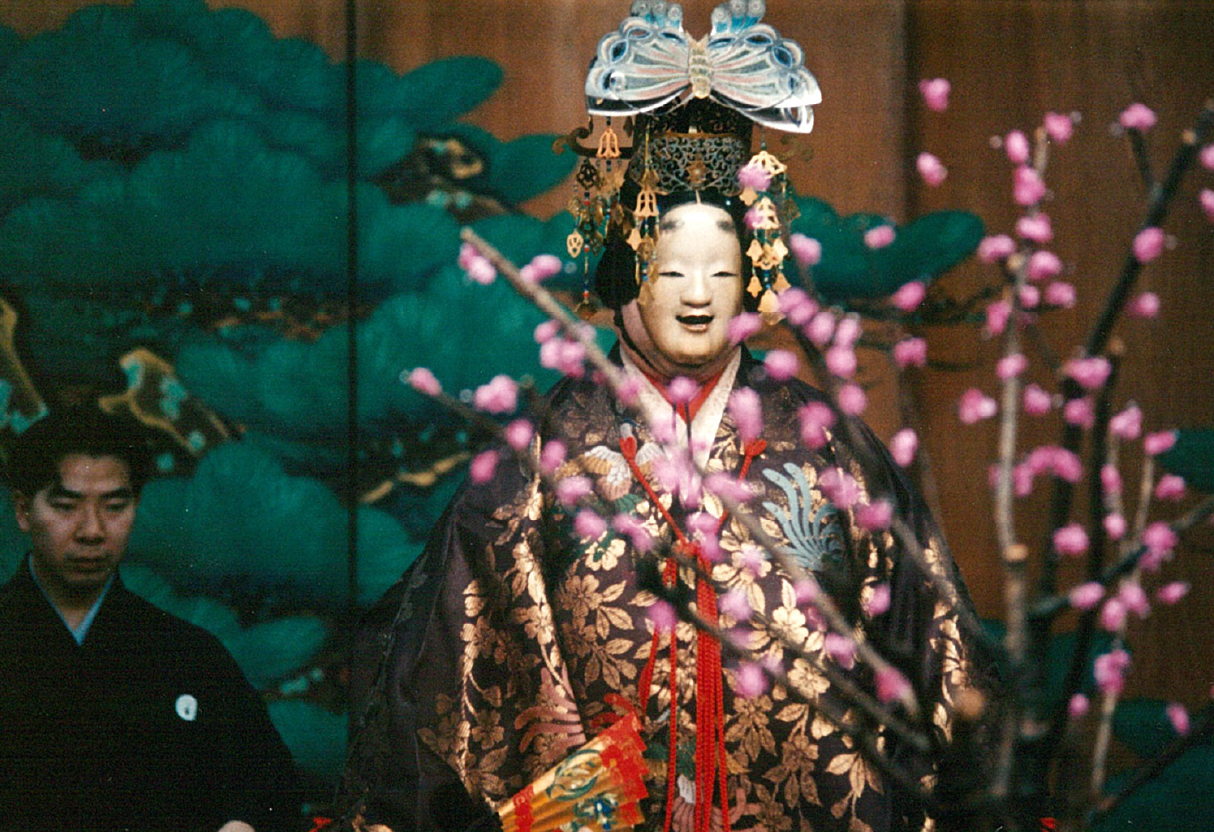
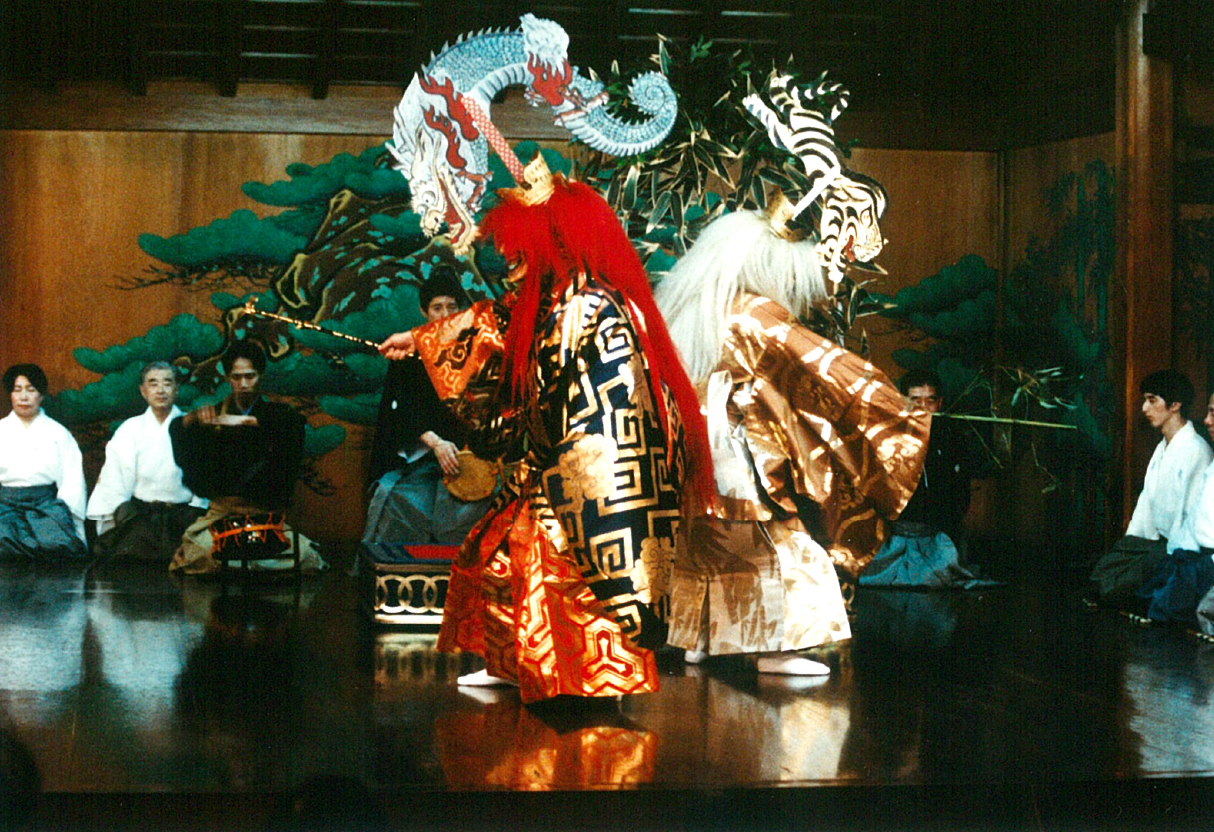
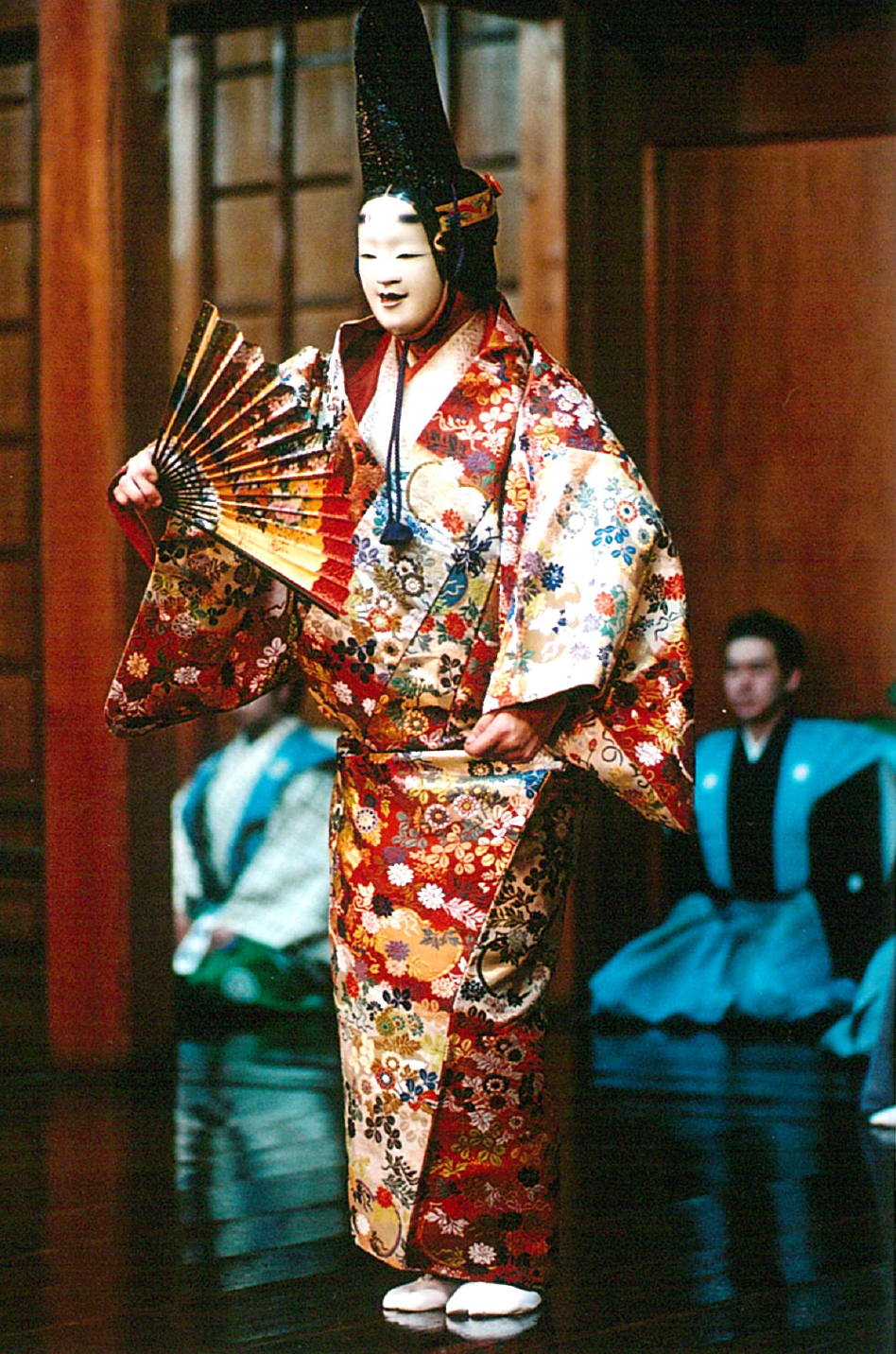


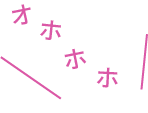
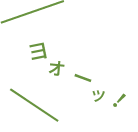
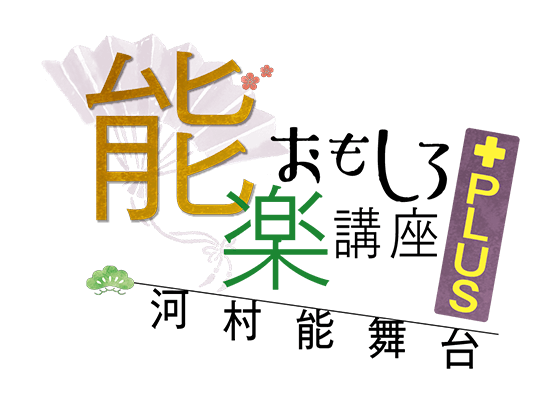
The “Enjoy Noh” ProgramGive Noh a Try!
Noh has a long-lasting tradition of more than 650 years.
Its history reflects how Noh has remained relevant to the people of each generation.
The Kawamura Noh Theater offers a participatory program for beginners, “Enjoy Noh.”
Starting with interesting episodes and anecdotes pertaining to Noh, we present Noh from various perspectives,
allowing you to feel in this art form a profound beauty distinct to Japan.
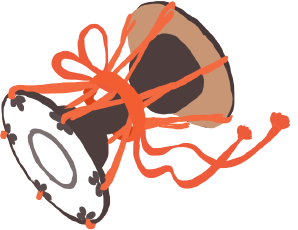



What is Noh?
What image do you have of Noh?
Most Japanese people suppose Noh is something hard to understand.
However, with a long history of more than 650 years, it surely must have some charm beyond being esoteric.
Let’s examine the mysteries of Noh more deeply.
Noh is composed of a variety of arts such as poetry, drama, dance, music, and fine art.
These move the audience as an integrated artistic experience.
Audiences find the minimalistic stage settings and the uncomplicated motions of the Noh actors tremendously impressive and moving.
The Japanese classical entertainment of Noh has a long history of 650 years.
At the same time, it is a living, contemporary art form that can always be turned into something new and fresh by its audiences.
-
Noh Scripts are Poetic
Noh scripts are filled with beautiful Japanese poems such as waka or passages from “The Tale of Genji.” Quoting these kinds of classical literature, Noh scripts are elaborately developed into beautiful poems. They have profound meaning and are therefore well worth appreciating. Their exquisite tone allows the audience to imagine various dramatic scenes filled with the beauties of nature. The unique rhythm of the scripts in seven and five syllable meter resonate and make a satisfying impression.
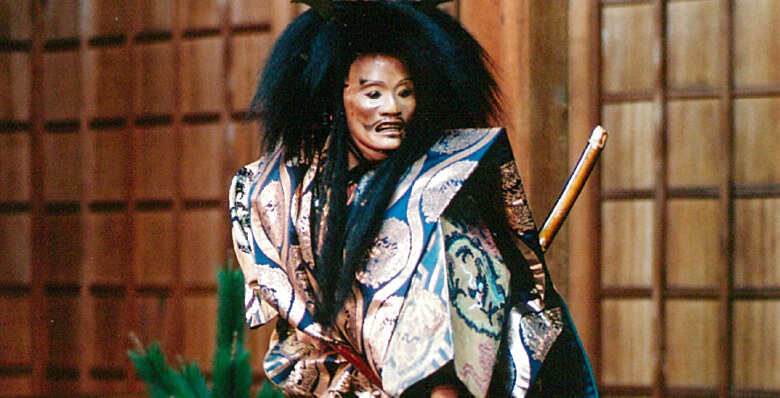
-
Noh is Dramatic
Noh plays are dramas, with a great variety of themes. Some have enjoyable story development, while others have battle scenes. You will enjoy a fearsome Hannya (ogre), and then a beautiful woman dancing. Each Noh play has its own specific taste and appeal. The main themes are human feelings that are generally shared, such as love or hate. We also find people praying, entreating and fighting, and the stories are always deeply impressive. The main characters in Noh plays are also of various types. We find samurai, aristocrats, women, Hannya, Yokai (monsters), ghosts and gods. Sometimes, the main character is a bird, an insect, or a flower spirit. I know of no such drama in any other stage in the world. Another interesting feature of Noh is that ghosts of losers in battles or love are popularly employed as main characters.
The one important element common among this variety of plays is that of human emotion. That is why we find the plays so dramatically impressive, and why they touch us so deeply.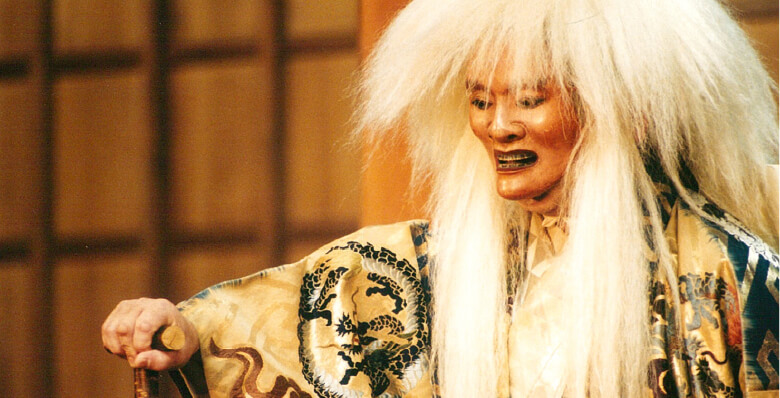
-
Noh is a Type of Musical
Noh consists of Ohayashi (orchestra for Noh) and Utai (vocal section). Scenes in which actors dance accompanied only by Ohayashi music allow the audience to freely conjure up an imaginary world while they observe the dancing. Ohayashi music also livens up the play by its special focus on “ma,” time intervals between words/sounds. The music and the action are perfectly matched on the stage, so that Noh may be said to be a type of Japanese musical.
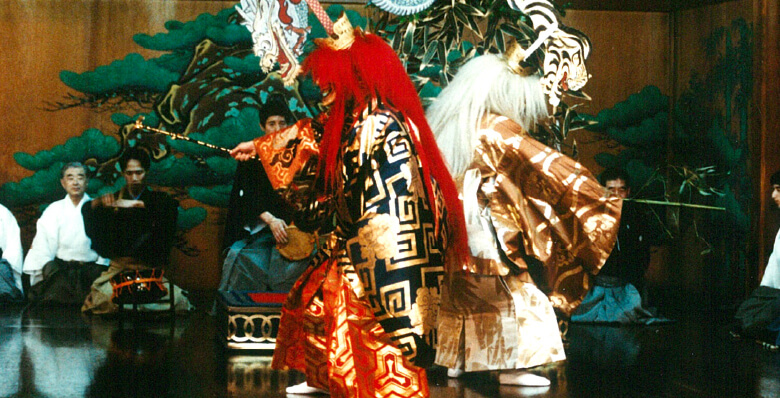
-
Noh is a Mobile Museum of Art
Surely among the pleasures accompanying Noh are the beautiful Omote (Noh masks) and Shozoku (Noh costumes). The fabulous Shozoku are filled with elaborate beauty and design skills unique to Japan. The clothes in which actors are dressed are not descriptive; for that reason, they effectively enrich what is expressed in Noh.
For their part, Omote are tools highly cherished in the world of Noh. Some Omote have been handed down and used for several hundreds of years. The impressions made by Omote can be changed just by angling them differently, which stimulates the audience’s imagination. Omote may be said to embody the attraction of Noh, and they never lose their freshness for observers.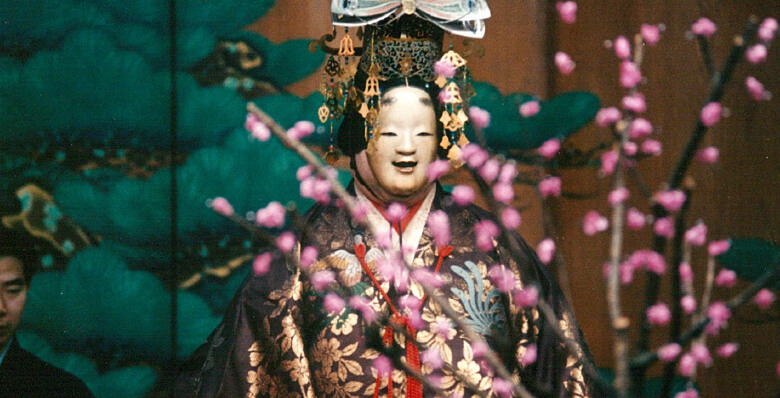
The “Enjoy Noh” Program
(Time required: 60 to 90 minutes, depending on the lesson)
The Inner Workings of Noh
What’s beneath the Noh stage?
Noh is staged indoors, so why is there a roof?
We will discuss various fascinating features of Noh.
-
Utai for Beginners
In Japan’s performing arts and martial arts as well, manners are emphasized from start to finish. In this lesson, we begin with the proper ways of sitting and of offering greetings in Japanese style. Everyone will be learning together, so beginners need not worry about keeping up.
You will sense the pleasure of producing sound while appreciating the unique Japanese rhythms and the sound tones.
Here is a chance for you to learn the proper sitting style for producing an impressive Noh voice, along with other aspects of Japanese manners.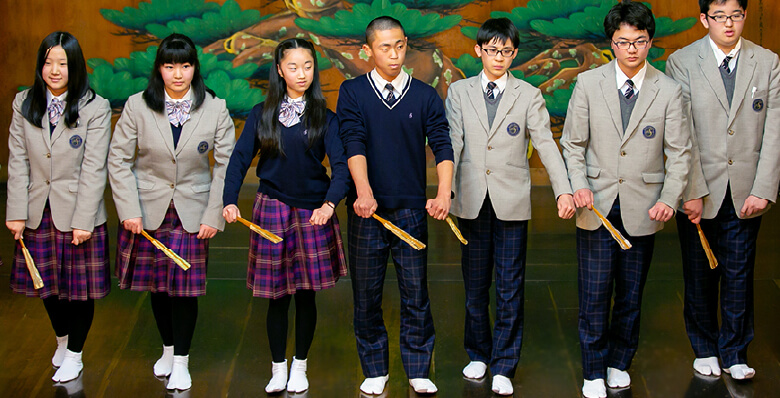
-
The Charms of Omote
Omote (Noh masks) are of course static objects, but their aspects change according to the angle at which they are viewed. A single mask is capable of appearing to smile, weep, or even be angry.
Get a close-up view and feel the expressiveness of Omote.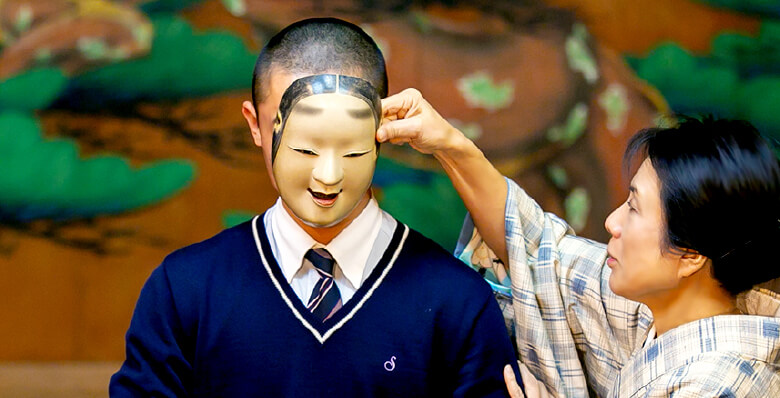
-
Japanese Musical Instruments
Enjoy the variety of beautiful sounds produced by Japanese musical instruments such as fue (flute), kotsuzumi (small hand drum), and otsuzumi (large hand drum).
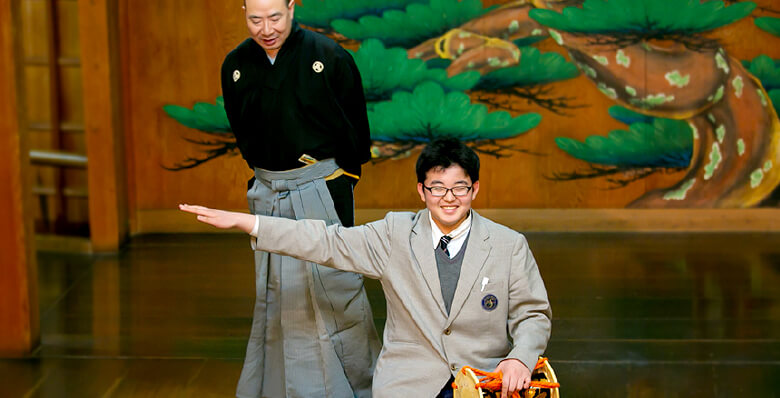
-
Experience the Stage
Pull on a pair of tabi (socks), and experience basic Noh poses and manners of walking. Noh is all about proper posture. Now, cover your face with one of the Omote you have observed. How do things look?
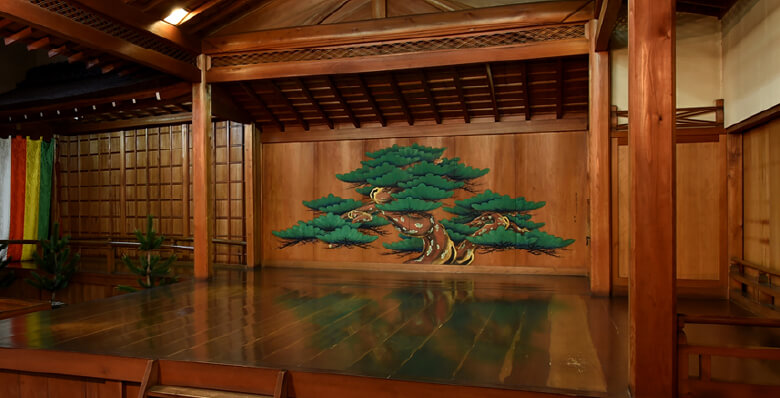
-
Experiencing Noh
Now that you have experienced Noh with all of your senses, how do you feel?
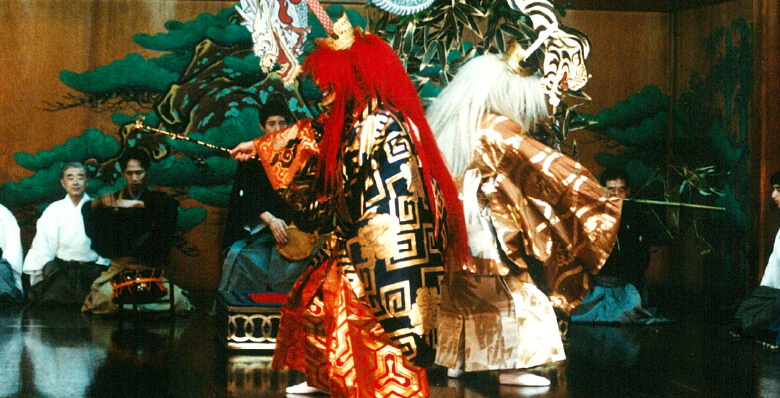
About the Kawamura Noh Theater
Located near Kyoto Imperial Palace, Kawamura Noh Theater faces Karasuma-dori, Kyoto’s main street.
From the outside it appears to be an ordinary house, but inside is a professional Noh stage, and the building can accommodate 320 people.
Invitation to the “Enjoy Noh” Program
The “Enjoy Noh” program was established in 1997, targeting beginners and youths. Since then, the program has attracted more than 480,000 participants, including students on school trips, people from countries outside Japan, and others.
The program offers an introductory guide to Noh at a reasonable price. Schools may use it in conjunction with club activities, trips, or extracurricular activities.
Please contact us via email.
Locations
(Note: The program is available for presentation at other locations)
Access Info
Kawamura Noh Theater
Yanagino Zushi-cho 320-14, Kamidachiuri Agaru, Karasuma, Kamigyo Ward, Kyoto, Japan
TEL:075-722-8716
Noh Conventions
-
Noh Scripts are Poems
A Noh stage is quite simple. It has no Maku/Doncho (stage curtain), nor is there a buzzer to indicate the start of a performance. A pine tree at the rear of the stage is the only scenery. The stage is capable of transforming into a palace, an ocean, or desolate fields and mountains. You can see the waves, and conjure up hustle and bustle existing only in your mind.
Magical, don’t you think?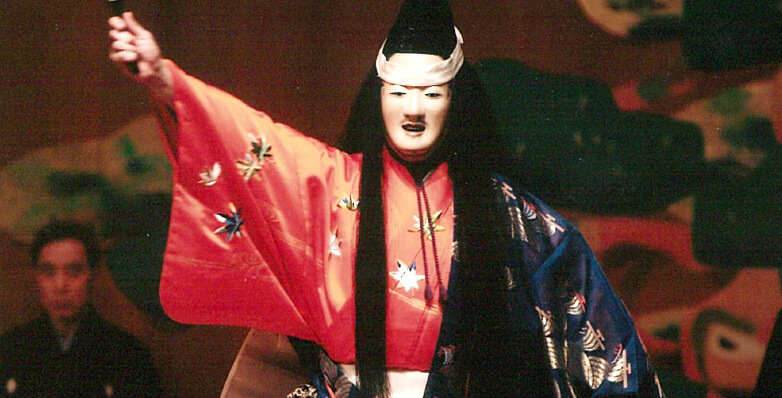
-
Shozoku (Noh Costumes)
The Shozoku worn by Noh performers are highly eloquent. The way in which performers are dressed offers a great deal of information. Here are some examples.
Women wearing red Shozoku are young; those wearing Shozoku that are blue or brown are middle-aged or older. Shozoku also allow us to imagine the status or occupation of a performer. Accessories and headdresses have various meanings. For instance, a performer with Kasa (a bamboo hat) is understood to be traveling. All of these are hints to the audience, enabling us to visualize the story in detail.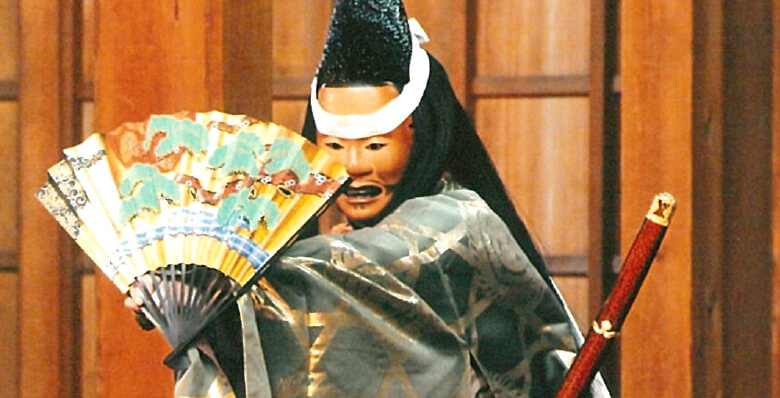
-
Appreciating Noh
As you can see, Noh depends greatly on the imaginative skill of the audience.
Its simplicity allows us to freely imagine what is behind the scenes, and the extent of our imaginary world is boundless.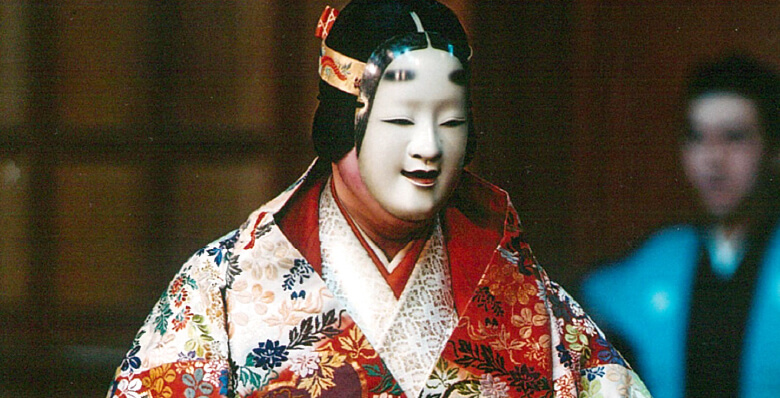
There is a famous passage in “Fushi Kaden” (a treatise on Noh written by one of its great exponents, Zeami):
Artistic performances enrich people’s lives, moving every individual equally regardless of status. It is the foundation of happiness, and the secret to long life.
Once, when I attended a musical, I found my mind gradually becoming refreshed and relaxed during the performance. The experience made me realize how narrow were my concerns and how tightly I was wound.
Noh is similar to pictorial art in that both require both creators and observers, but stage art in particular demands interaction with its audience. In Noh, the Hayashikata (musicians), Maite (dancers) and Utaite (singers) are constantly communicating silently and invisibly, and this type of communication also exists between the various Noh performers and the audience.
Noh makes invisible worlds tangible. Discover your own invisible treasure in Noh.
Profile
-
Profile of Junko Kawamura
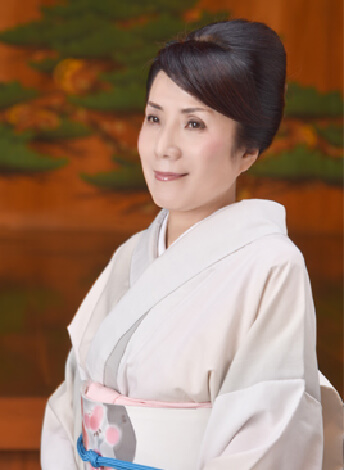
Born in Fukuoka Prefecture. Graduated from Doshisha University (Faculty of Letters).
After marrying the late Nobushige Kawamura (a prominent leading performer “shite” in the Kanze school of Noh and designated a “Holder of Important Intangible Cultural Property”), became involved in Kawamura Noh Theater, and has been running “Getting to Know Noh for Women” for almost 20 years.
In 1997, started the “Enjoy Noh” program targeting beginners and youths. The program has attracted more than 480,000 participants, including students on school trips, people from countries outside Japan, and others.
Has also given lectures for foreign ambassadors from countries such as Canada and Egypt.
Other numerous lecture experiences include ones given for the Kyoto City General Center for Lifelong Learning, the Yamagata Prefecture General Center for Lifelong Learning, the Takarazuka International Friendship Association, the Kyoto Chamber of Commerce (Branch Manager Meeting), and the Kyoto Association of Corporate Executives (Branch Manager Meeting).
Produced an event on the Rooftop Garden of Kyoto Station Building, and appeared on the TV program “Noh no Tabi Gokoro” (Noh Wanderlust) by SKY Perfect TV!
Attended workshops and lectures all over Japan via the Rotary Club and the Lions Club, and is actively engaged in producing new Noh plays.
Appeared on Kyoto Broadcasting System’s TV talk show “Gokujo no Kyoto” (Refined Kyoto) with Japanese-style painter Taro Yamamoto as well as on the KBS WORLD Radio program “Onko Chishin” (New Ideas Based on Study of the Past).
Has also been a subject of the cultural column of the morning edition of the Nikkei newspaper (Nihon Keizai Shimbun).
Teaches classes entitled “Animation and Noh” (Kyoto Seika University, Faculty of Manga) and “Traditional Culture of Kyoto in English” (Kyoto Women’s University), and is a director of the Nohgaku Promotion Association.
Recently, has been actively developing an English-language version of her “Enjoy Noh” program. -
Profile of Kotaro Kawamura
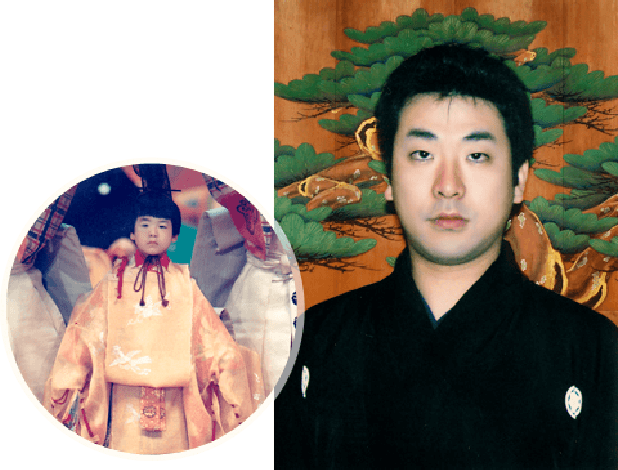
A lead performer (shite) in the Kanze school of Noh
Born in 1985. First appeared on the stage at the age of 2.
Trained by father Nobushige and grandfather Teiji. Performed in over 220 Noh plays as a child actor. When 11, first appeared as “shite” in the play “Shojo” (A mystical sake-loving creature living in water).
First overseas performance while enrolled at Doshisha Junior High School.
Appeared with father Nobushige on the SKY Perfect TV! programs “Noh e Ikou” (Let’s go to Noh), “Noh no Tabi Gokoro” (Noh Wanderlust).
Studied under the 13th Kiemon Hayashi. In 2014, started his own career as a Noh performer.
Member of the Kyoto Nohgaku Training Facility and of the Kyoto Nohgaku Association.
Contact Info
Junko Kawamura
Kawamura Noh Theater
Yanagino Zushi-cho 320-14, Kamidachiuri Agaru, Karasuma, Kamigyo Ward, Kyoto, Japan
kunpuu123@gmail.com
